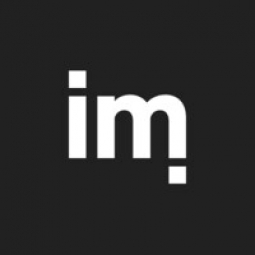技术
- 网络安全和隐私 - 应用安全
- 网络安全和隐私 - 网络安全
适用行业
- 医疗保健和医院
- 国家安全与国防
适用功能
- 产品研发
- 质量保证
用例
- 供应链可见性(SCV)
- 篡改检测
关于客户
PayFlex Systems USA, Inc. 是一家第三方管理机构,直接与雇主合作管理其福利支出账户、COBRA 和交通计划。该公司已营业 20 年,总部位于内布拉斯加州奥马哈。 PayFlex 为消费者提供用于医疗交易的专用借记卡,包括共付额和药品购买。该服务需要存储借记卡号和索赔数据,因此安全性和法规遵从性成为公司的主要考虑因素。 PayFlex 致力于维护最高的安全标准,以保护其客户及其员工。
挑战
PayFlex 是一家直接与雇主合作管理其福利支出账户、COBRA 和 Transit 计划的第三方管理员,面临着重大的安全挑战。该公司为消费者提供用于医疗交易的专用借记卡,这需要存储借记卡号和索赔数据。然而,这种便利性需要通过潜在的安全和监管考虑来平衡。 PayFlex 有责任维护最高的安全标准,以保护其客户及其员工。监管合规性是 PayFlex 的主要考虑因素,因为它必须符合 PCI 和 HIPAA 标准。 PCI 强制要求基本的网络安全控制来保护持卡人数据,而 HIPAA 标准则要求企业防止健康信息泄露。自 HITECH 法案实施以来,违约责任高达 150 万美元。
解决方案
为了应对这些挑战,PayFlex 部署了 Imperva SecureSphere Web 应用程序防火墙。该解决方案提供了 PayFlex 应用程序急需的可见性,并补充了 PayFlex 的安全开发生命周期。 SecureSphere 提供对数据访问和使用的全面可见性,其易于使用的界面提供精细的策略创建和实施,以防止未经授权的访问或数据更改。该解决方案适合PayFlex当前的基础设施和开发流程,并且能够快速满足合规性和安全性要求。尽管该公司努力向开发人员传授正确的编码技术,但 Web 应用程序防火墙 (WAF) 充当了安全网,以防不良代码漏网。
运营影响
数量效益

Case Study missing?
Start adding your own!
Register with your work email and create a new case study profile for your business.
相关案例.

Case Study
Hospital Inventory Management
The hospital supply chain team is responsible for ensuring that the right medical supplies are readily available to clinicians when and where needed, and to do so in the most efficient manner possible. However, many of the systems and processes in use at the cancer center for supply chain management were not best suited to support these goals. Barcoding technology, a commonly used method for inventory management of medical supplies, is labor intensive, time consuming, does not provide real-time visibility into inventory levels and can be prone to error. Consequently, the lack of accurate and real-time visibility into inventory levels across multiple supply rooms in multiple hospital facilities creates additional inefficiency in the system causing over-ordering, hoarding, and wasted supplies. Other sources of waste and cost were also identified as candidates for improvement. Existing systems and processes did not provide adequate security for high-cost inventory within the hospital, which was another driver of cost. A lack of visibility into expiration dates for supplies resulted in supplies being wasted due to past expiry dates. Storage of supplies was also a key consideration given the location of the cancer center’s facilities in a dense urban setting, where space is always at a premium. In order to address the challenges outlined above, the hospital sought a solution that would provide real-time inventory information with high levels of accuracy, reduce the level of manual effort required and enable data driven decision making to ensure that the right supplies were readily available to clinicians in the right location at the right time.

Case Study
Gas Pipeline Monitoring System for Hospitals
This system integrator focuses on providing centralized gas pipeline monitoring systems for hospitals. The service they provide makes it possible for hospitals to reduce both maintenance and labor costs. Since hospitals may not have an existing network suitable for this type of system, GPRS communication provides an easy and ready-to-use solution for remote, distributed monitoring systems System Requirements - GPRS communication - Seamless connection with SCADA software - Simple, front-end control capability - Expandable I/O channels - Combine AI, DI, and DO channels

Case Study
Driving Digital Transformations for Vitro Diagnostic Medical Devices
Diagnostic devices play a vital role in helping to improve healthcare delivery. In fact, an estimated 60 percent of the world’s medical decisions are made with support from in vitrodiagnostics (IVD) solutions, such as those provided by Roche Diagnostics, an industry leader. As the demand for medical diagnostic services grows rapidly in hospitals and clinics across China, so does the market for IVD solutions. In addition, the typically high cost of these diagnostic devices means that comprehensive post-sales services are needed. Wanteed to improve three portions of thr IVD:1. Remotely monitor and manage IVD devices as fixed assets.2. Optimizing device availability with predictive maintenance.3. Recommending the best IVD solution for a customer’s needs.

Case Study
HaemoCloud Global Blood Management System
1) Deliver a connected digital product system to protect and increase the differentiated value of Haemonetics blood and plasma solutions. 2) Improve patient outcomes by increasing the efficiency of blood supply flows. 3) Navigate and satisfy a complex web of global regulatory compliance requirements. 4) Reduce costly and labor-intensive maintenance procedures.

Case Study
Harnessing real-time data to give a holistic picture of patient health
Every day, vast quantities of data are collected about patients as they pass through health service organizations—from operational data such as treatment history and medications to physiological data captured by medical devices. The insights hidden within this treasure trove of data can be used to support more personalized treatments, more accurate diagnosis and more advanced preparative care. But since the information is generated faster than most organizations can consume it, unlocking the power of this big data can be a struggle. This type of predictive approach not only improves patient care—it also helps to reduce costs, because in the healthcare industry, prevention is almost always more cost-effective than treatment. However, collecting, analyzing and presenting these data-streams in a way that clinicians can easily understand can pose a significant technical challenge.




